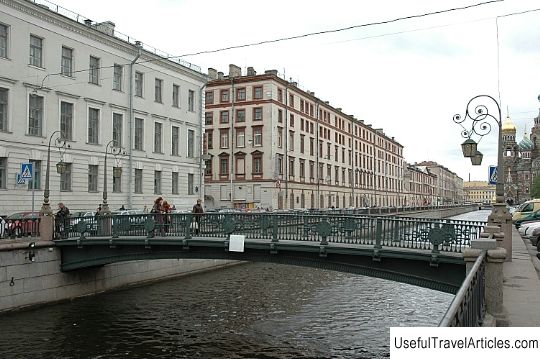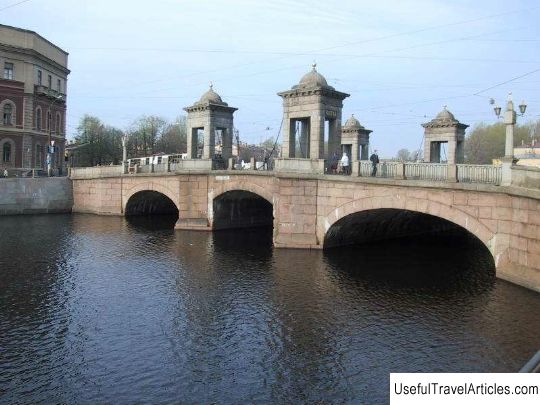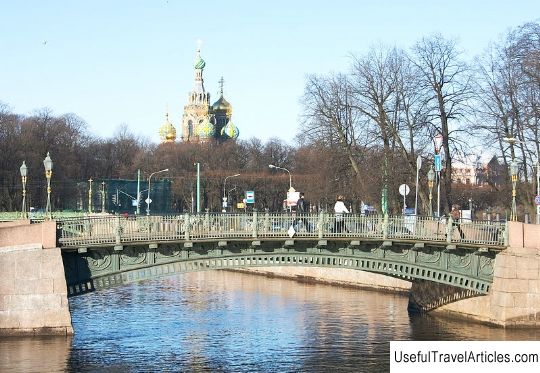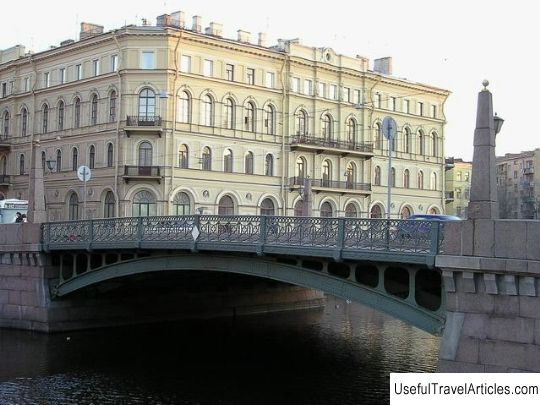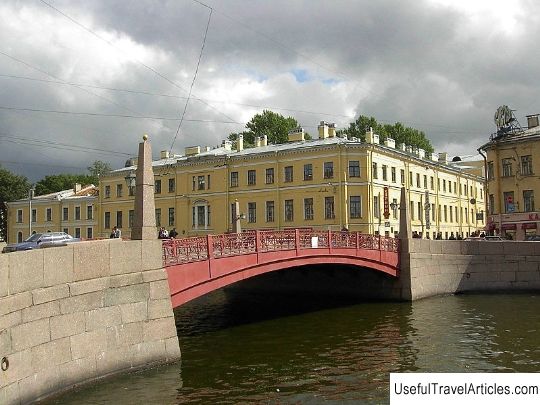Panteleymonovsky bridge description and photos - Russia - St. Petersburg: St. Petersburg
Rating: 8,2/10 (869 votes) 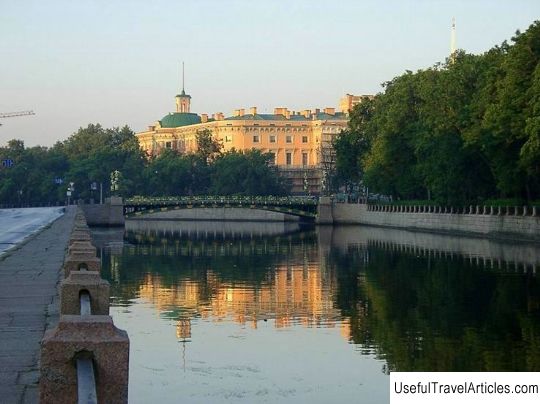
Panteleymonovsky bridge description and photos - Russia - St. Petersburg: St. Petersburg. Detailed information about the attraction. Description, photos and a map showing the nearest significant objects. Photo and descriptionPanteleimonovsky Bridge across the Fontanka River, connecting Bezymyanny Island and the Summer Garden Island in the Central District of St. Petersburg, like the street nearby, got its name from the Church of St. Panteleimon. The bridge is a continuation of Pestel street to the Moika embankment. The nearest metro station is Gostiny Dvor. Initially, at the beginning of Panteleimonovskaya Street there was a boat crossing, which was mentioned in documents back in 1721. In 1725-1726, H. Van Boles erected here a wooden aqueduct bridge, which did not have its own name. In 1749-1749 the wooden bridge was replaced with a new one, the project of which was developed by the architect F. Rastrelli. It was executed in the Baroque style with many stucco and carved details. After the flood of 1777, the bridge was dismantled. In 1823-1824, a chain bridge was built on this meta, the authors of the project were V. von Tretter and F. Khristianovich. This bridge became the first transport suspension bridge in the Russian Empire. The construction was directly supervised by V.A. Khristianovich and F.O. Term. The bank supports of the structure were made of granite slabs. They were taken from the place where the channels of the Mikhailovsky Castle were dismantled. The work was supervised by master mason Samson Sukhanov. The length of the bridge is 43 m, and the width is just over 10 m. The bridge was opened in November 1824. Forged and cast-iron structural elements were manufactured at Ch. Byrd's plant (Admiralty plant). The granite abutments rested on piles. Portals of 5 cast-iron 6-meter columns were fortified on both banks. They were decorated in the ancient Egyptian style. The eaves were decorated with lion heads. Through their mouths, carrying chains were threaded, on which the superstructure with the bridge deck was held. Gilded rosettes, arches, and lanterns were used as decorations. A distinctive feature of the bridge was that it swayed. The chain bridge has served for 85 years. After the Egyptian Bridge collapsed in 1905, it was decided to reconstruct it. In an official statement from the city authorities, another reason for its dismantling was indicated - the need to lay tram lines. Designed by architects L.A. Ilyin and A.P. Pshenitsky in 1907-1908, the construction of a new single-span arch bridge began. The work was supervised by engineer Reinecke. Despite the fact that it was officially opened, the Academy of Arts did not approve the sketches of the bridge sent for approval, because it was considered there, that the decor of the railings is more like a balcony railings than pavements. The project was finalized and approved in 1910. To create a consonant ensemble with the First and Second Engineering bridges, Ilyin used similar decor techniques. But the Panteleimonovsky Bridge turned out to be more magnificent in its decoration, if only because the architect widely used gold leaf plating and bronzing of jewelry. The figured elements of the bridge were made in the workshops of the Karl Winkler plant. The first restoration of the Panteleimonovsky Bridge took place in 1957. About 82 square meters were covered with red gold. m of decor details. The lost floor lamps were restored. The following restoration work was carried out in 1969 and in 1983-84. In 2002, the Panteleimonovsky bridge underwent a major overhaul with the replacement of worn-out metal structures, road surfaces and waterproofing, 5 through holes from shells left over from the Great Patriotic War were removed. There are several interesting details associated with the bridge. It is believed that the patron saint of the bridge is Saint Panteleimon the healer. In the place where the bridge meets the First Engineer is a monument to Chizhik-Pyzhik. Not far from the Summer Garden in 1833-1834, A.S. Pushkin. Heading from home to the garden, he each time passed along the Panteleimonovsky bridge. The bridge is mentioned in the satirical work of A.K. Tolstoy "Popov's Dream". The bridge changed its name several times. In 1915 it was called the Gangutsky Bridge, in 1923 - the Decembrist Pestel Bridge, in 1928 - the Pestel Bridge. Since October 4, 1991       We also recommend reading Hyde Park description and photos - Australia: Sydney Topic: Panteleymonovsky bridge description and photos - Russia - St. Petersburg: St. Petersburg. |
